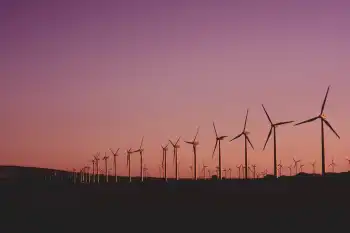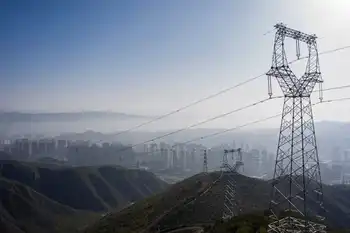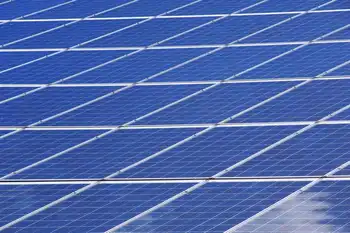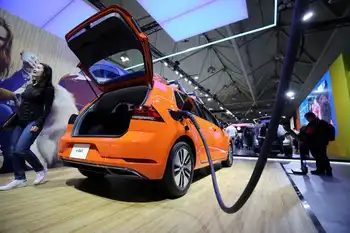BWE - Wind power potential even higher than expected

Arc Flash Training CSA Z462 - Electrical Safety Essentials
Our customized live online or in‑person group training can be delivered to your staff at your location.

- Live Online
- 6 hours Instructor-led
- Group Training Available
German Wind Power 2030 Outlook highlights onshore and offshore growth, repowering, higher full-load hours, and efficiency gains. Deutsche WindGuard, BWE, and LEE NRW project 200+ TWh, potentially 500 TWh, covering rising electricity demand.
Key Points
Forecast: efficiency and full-load gains could double onshore wind to 200+ TWh; added land could lift output to 500 TWh.
✅ Modern turbines and repowering boost full-load hours and yields
✅ Onshore generation could hit 200+ TWh on existing areas by 2030
✅ Expanding land to 2% may enable 500 TWh; offshore adds more
Wind turbines have become more and more efficient over the past two decades, a trend reflected in Denmark's new green record for wind-powered generation.
A new study by Deutsche WindGuard calculates the effect on the actual generation volumes for the first time, underscoring Germany's energy transition balancing act as targets scale. Conclusion of the analysis: The technical progress enables a doubling of the wind power generation by 2030.
Progressive technological developments make wind turbines more powerful and also enable more and more full-load hours, with wind leading the power mix in many markets today. This means that more electricity can be generated continuously than previously assumed. This is shown by a new study by Deutsche WindGuard, which was commissioned by the Federal Wind Energy Association (BWE) and the State Association of Renewable Energies NRW (LEE NRW).
The study 'Full load hours of wind turbines on land - development, influences, effects' describes in detail for the first time the effects of advances in wind energy technology on the actual generation volumes. It can thus serve as the basis for further calculations and potential assessments, reflecting milestones like UK wind surpassing coal in 2016 in broader analyses.
The results of the investigation show that the use of modern wind turbines with higher full load hours alone on the previously designated areas could double wind power generation to over 200 terawatt hours (TWh) by 2030. With an additional area designation, generation could even be increased to 500 TWh. If the electricity from offshore wind energy is added, the entire German electricity consumption from wind energy could theoretically be covered, and renewables recently outdelivered coal and nuclear in Germany as a sign of momentum: The current electricity consumption in Germany is currently a good 530 TWh, but will increase in the future.
Christian Mildenberger, Managing Director of LEE NRW: 'Wind can do much more: In the past 20 years, technology has made great leaps and bounds. Modern wind turbines produce around ten times as much electricity today as those built at the turn of the millennium. This must also be better reflected in potential studies by the federal and state governments. '
Wolfram Axthelm, BWE Managing Director: 'We need a new look at the existing areas and the repowering. Today in Germany not even one percent of the area is designated for wind energy inland. But even with this we could cover almost 40 percent of the electricity demand by 2030. If this area share were increased to only 2 percent of the federal area, it would be almost 100 percent of the electricity demand! Wind energy is indispensable for a CO2-neutral future. This requires a clever provision of space in all federal states. '
Dr. Dennis Kruse, Managing Director of Deutsche WindGuard: 'It turns out that the potential of onshore wind energy in Germany is still significantly underestimated. Modern wind turbines achieve a significantly higher number of full load hours than previously assumed. That means: The wind can be used more and more efficiently and deliver more income. '
On the areas already designated today, numerous older systems will be replaced by modern ones by 2030 (repowering). However, many old systems will still be in operation. According to Windguard's calculations, the remaining existing systems, together with around 12,500 new, modern wind systems, could generate 212 TWh in 2030. If the area backdrop were expanded from 0.9 percent today to 2 percent of the land area, around 500 TWh would be generated by inland wind, despite grid expansion challenges in Europe that shape deployment.
The ongoing technological development must also be taken into account. The manufacturers of wind turbines are currently working on a new class of turbines with an output of over seven megawatts that will be available in three to five years. According to calculations by the LEE NRW, by 2040 the same number of wind turbines as today could produce over 700 TWh of electricity inland. The electricity demand, which will increase in the future due to electromobility, heat pumps and the production of green hydrogen, can thus be completely covered by a combination of onshore wind, offshore wind, solar power, bioenergy, hydropower and geothermal energy, and a net-zero roadmap for Germany points to significant cost reductions.











